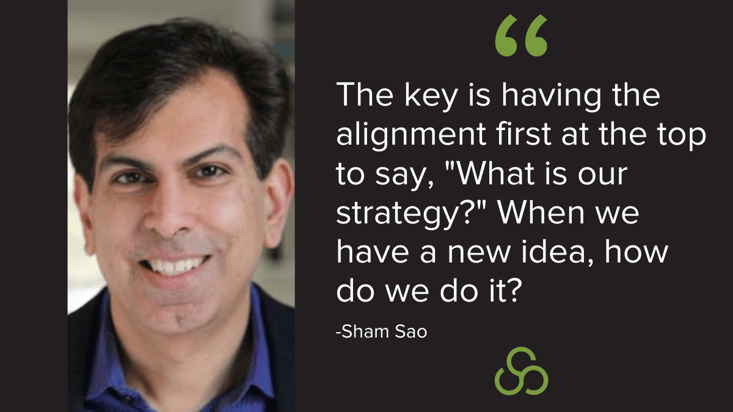
In this clip from the What Sales Can Learn From Series, Sham Sao, the GM & Board Director for think-cell, explains the processes that he has used to drive alignment between teams.
Carole Mahoney:
How do we use, or what process have you used to drive alignment between teams? Because it seems like it really does need to get granular at some point. Where do we start?
Sham Sao:
Yeah. I mean, it goes in both directions, right? First thing is, it does have to start at the top. I mean, we've probably all seen examples of companies where especially the most brilliant CEOs have lots of good ideas, right? And they might just go to marketing and say, "Hey, can you do this?" Right? And if the teams aren't aligned on that... so first thing is that's great. Does that mean we should go do that right this second? Or does it mean we should do it in like a month? It doesn't mean we're going to do it in a year, but should it be sort of 30 days from now where we say, "Okay, CEO's got a great idea. It does align with our strategy. Let's put together a play that gets marketing and sales so we can tackle it together." Right?
Otherwise, what happens is somebody in marketing just starts to go run the thing the CEO wanted it. Right? So the key is having the alignment first at the top to say, "What is our strategy?" When we have a new idea, how do we do it? Or do we have some tolerance to say, if it's a fundamental change, can we wait 30 days or 60 days to get everything aligned to push it out? Sometimes you can't. That's okay. As long as the company goes, "Okay, we're going to pivot this on a one week thing because it's critical." You just got to put pause on everything, get everyone together and realize that this is that kind of thing.
Carole Mahoney:
Yeah.
Sham Sao:
Same with that, not just the CEO, the other rest of the executive team. I've just also seen too many times where an executive team member with all good wishes and goodwill will say something to somebody in sales and marketing, and a person feels like, "Oh, it's great, and I want to show this person I'm action oriented." So I go and do it, right? But what about the rest of the team? What about everybody else? They need to come along with it too. So how do you make sure that if it's a great idea that it gets instituted the right way?
And as you said, there's a couple of different levels at which the disconnect can happen. One is the strategy itself may need some refinement, to get it exactly right. The second is the strategy might be solid, but the execution or the programs you had in place might need some optimizations so that you're not changing the strategy, but you're optimizing say, "We can make this happen through this set of webinars, or we can make it through these whatever." And you might need to test the two to see which ones really work. That's an execution task, right?
Carole Mahoney:
Yeah. Yeah. And I'm so glad that you brought that up too, because one of the things that I see happen a lot is that the executive team develops a strategy and then it's up to the frontline managers and salespeople and marketing professionals to be able to execute on that strategy. And when it doesn't work, the first thing that gets blamed is the strategy. "Oh, the strategy didn't work." Without ever really taking into consideration, does the team have the necessary tools, mindsets and skills to actually execute on that strategy before we decide, "Oh, it's the strategy that's wrong." I think we have to look at it from both sides.
Can't wait for more on this topic?
Click here to check out the on-demand session with Sham today! To learn more, check out Sham on LinkedIn.







